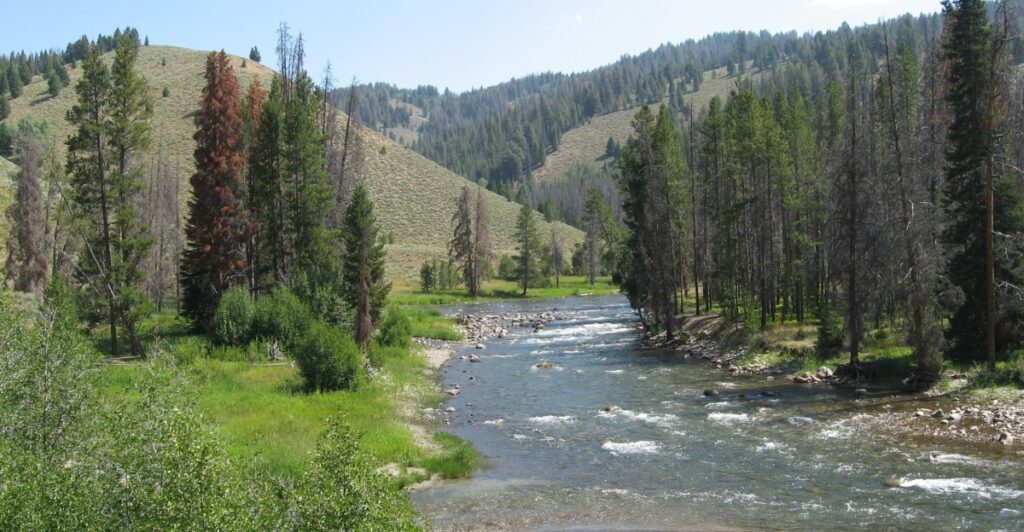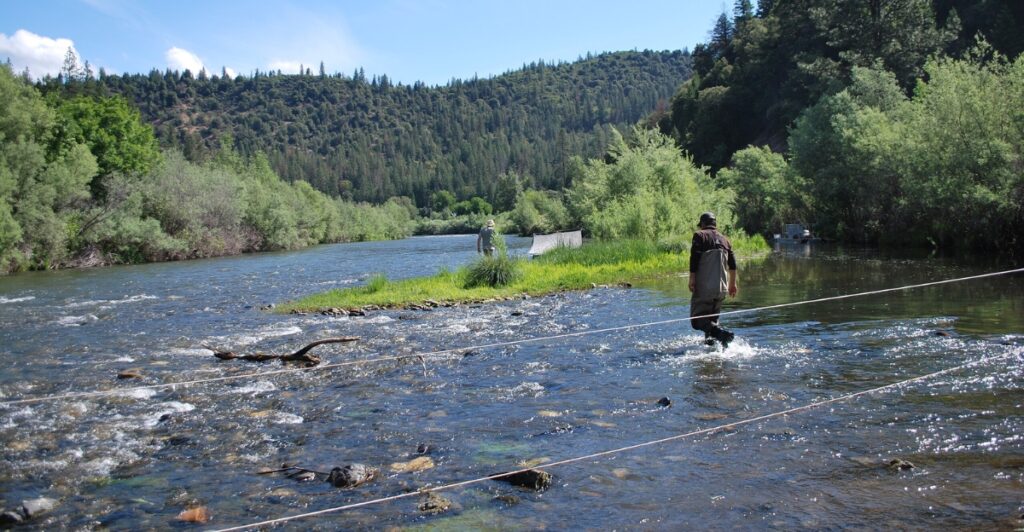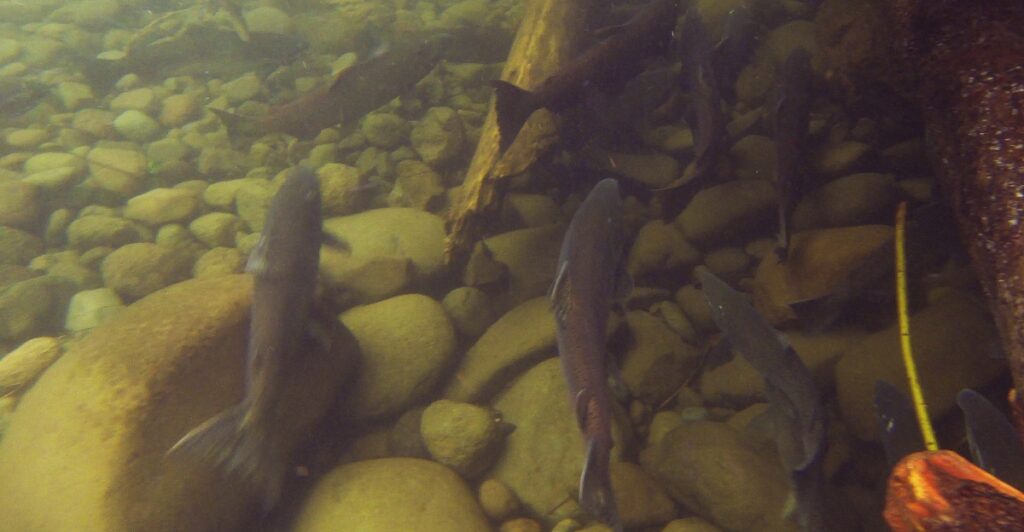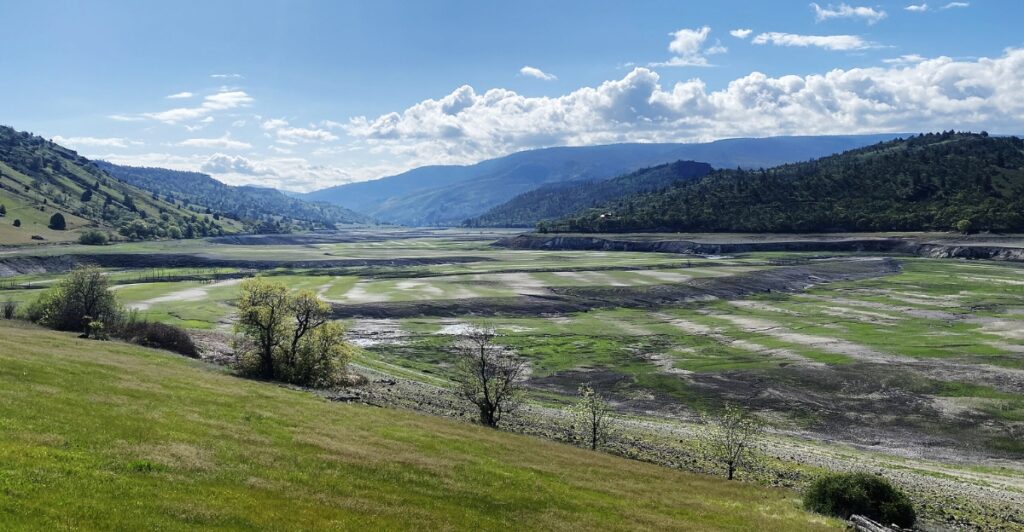
The Klamath River, flowing through Oregon and California, recently regained its natural course after more than a century of dam obstruction. This shift stems from the largest dam removal project in U.S. history, dismantling four massive hydroelectric dams. For generations, these structures disrupted salmon migration, causing sharp declines in their population. With barriers now gone, the river stretches over 400 miles of reopened habitat, offering hope for ecological revival and the return of the salmon vital to the region’s Indigenous cultures and ecosystems.
A Lifeline Restored for Salmon

Salmon, a key species for the Klamath River ecosystem, vanished from the upper reaches for over a century. These fish are more than just wildlife; they are cultural and nutritional lifelines for local tribes. With the dams removed, salmon are reclaiming their spawning grounds. This autumn, Chinook salmon have been spotted upstream in Oregon for the first time since 1912. Their reappearance so soon after the project’s completion stunned biologists, igniting optimism for the species’ recovery and the health of the river.
The Historic Struggle for Dam Removal

For decades, Indigenous tribes and environmental advocates led a relentless campaign to remove the dams. The Yurok, Karuk, and other tribes, whose histories and diets are deeply tied to salmon, fought tirelessly against skeptics and financial barriers. Federal regulators approved the plan in 2022, finally recognizing the ecological and cultural stakes. The demolition began in 2023 and culminated in August 2024. The project’s completion not only restores a vital waterway but also reflects decades of determination from communities that refused to give up on the river.
Environmental Damage from Dams

The dams, built between 1918 and 1962, were initially seen as technological progress, providing hydropower for rural areas. However, they also created stagnant reservoirs, spurred toxic algae blooms, and blocked fish migration. Over time, their impact devastated salmon populations and degraded water quality, harming the river’s ecosystem. Below the dams, fish numbers plummeted to less than five percent of historical levels. The dams’ removal eliminates these obstacles, allowing the river to recover and creating conditions for salmon and other species to thrive once more.
The Klamath’s Cultural Significance

For the local Indigenous communities, the Klamath River is far more than a natural feature—it’s a spiritual and cultural foundation. Salmon historically provided both sustenance and a cornerstone for ceremonies and traditions. As salmon populations dwindled, tribes experienced not only dietary but also cultural losses. The river’s restoration marks the possibility of reviving these practices. Tribal members now hope that their children will see the river teeming with salmon as their ancestors once did and reconnect with their heritage.
Biologists Witness Early Salmon Returns

Fish biologists were astonished when Chinook salmon appeared in upstream tributaries mere months after the final dam’s removal. These spawning grounds had been submerged or inaccessible for over a century. The speed of their return suggests the salmon retained an instinct for their ancestral habitats. Biologists are monitoring the river to document how other species like coho salmon, steelhead trout, and Pacific lamprey adapt to the newly restored waters. These early signs of revival inspire hope for the long-term health of the ecosystem.
Salmon’s Part in Ecological Balance

Salmon are integral to the Klamath River’s health, enriching the ecosystem as they migrate. Their decaying bodies provide essential nutrients like nitrogen and carbon, supporting riverside vegetation and feeding wildlife such as bears and eagles. Even the region’s iconic redwood trees grow taller in years with larger salmon runs. Restoring salmon populations is expected to create a ripple effect, benefiting countless species. With the dams gone, this intricate web of life has a chance to heal, revitalizing a river system deeply connected to its surroundings.
Challenges Along the Way

The dam removal project wasn’t without hurdles. Local communities feared the loss of hydropower, sediment buildup, and changes to familiar landscapes. Early stages of demolition released accumulated sediment, temporarily muddying the river and leading to fish die-offs. Some residents mourned the disappearance of lakes that had become community hubs. However, scientists emphasized that these effects are short-lived and necessary for long-term recovery. Despite these challenges, the Klamath River is steadily transforming into a healthier, freer-flowing waterway, proving restoration requires both sacrifice and vision.
A Glimpse of Renewal

As the reservoirs drained, the river revealed land unseen for over a century. Fields of wildflowers now bloom where stagnant waters once stood, attracting bees and deer to revitalized habitats. This transformation is just the beginning of a broader ecological recovery. With time, plant life will stabilize the soil, and native fish species will repopulate. The sight of the river flowing freely through landscapes once submerged inspires hope for a future where the Klamath River flourishes once again.
Economic and Cultural Aspirations

The return of salmon could bring profound benefits beyond ecology. Indigenous tribes hope to resume traditional fishing practices and revive economic opportunities tied to salmon. Ceremonies and festivals celebrating the fish, like the Yurok Salmon Festival, may finally feature Klamath River salmon instead of imported fish. Restoring salmon runs also holds the potential to boost local tourism and recreation. These aspirations, deeply tied to cultural and economic renewal, emphasize the significance of this project for communities along the river.
Lessons from Other Dam Removals

The Klamath project isn’t the first large-scale dam removal, but it sets a new precedent. Past efforts, like the Elwha River restoration in Washington, showed how quickly nature responds to open waterways. On the Elwha, salmon and other migratory fish returned upstream within three years. While hurdles remain, these examples demonstrate the resilience of river systems when given the chance. The Klamath’s success could encourage similar projects elsewhere, inspiring communities to reconsider how to balance human needs with ecological priorities.
Collaboration for a Sustainable Future

This monumental achievement required collaboration between tribes, scientists, government agencies, and environmental groups. Its success reflects what’s possible when diverse stakeholders unite for a common cause. Efforts to restore the Klamath are ongoing, including replanting vegetation and monitoring fish populations. The commitment of those involved ensures that the river’s recovery will continue, fostering a sustainable future for all who depend on its waters.
The Klamath River Reclaims Its Identity

With the dams gone, the Klamath River begins a new chapter, reconnecting its waters with the Pacific Ocean and its history with the future. Salmon are returning, ecosystems are reviving, and Indigenous cultures are finding renewal. This story is one of restoration—of a river, a species, and a way of life. The Klamath River’s recovery is proof of nature’s ability to heal when given the chance, and it’s a powerful example of how human action can support both the environment and cultural heritage.
Resources:
- BBC: After 100 years, salmon have returned to the Klamath River – following a historic dam removal project in California
- UC Davis: The Salmon Diaries: Life Before and After Klamath Dam Removal
Stay connected with us for more stories like this! Follow us to get the latest updates or hit the Follow button at the top of this article, and let us know what you think by leaving your feedback below. We’d love to hear from you!







